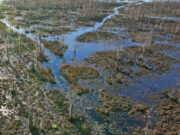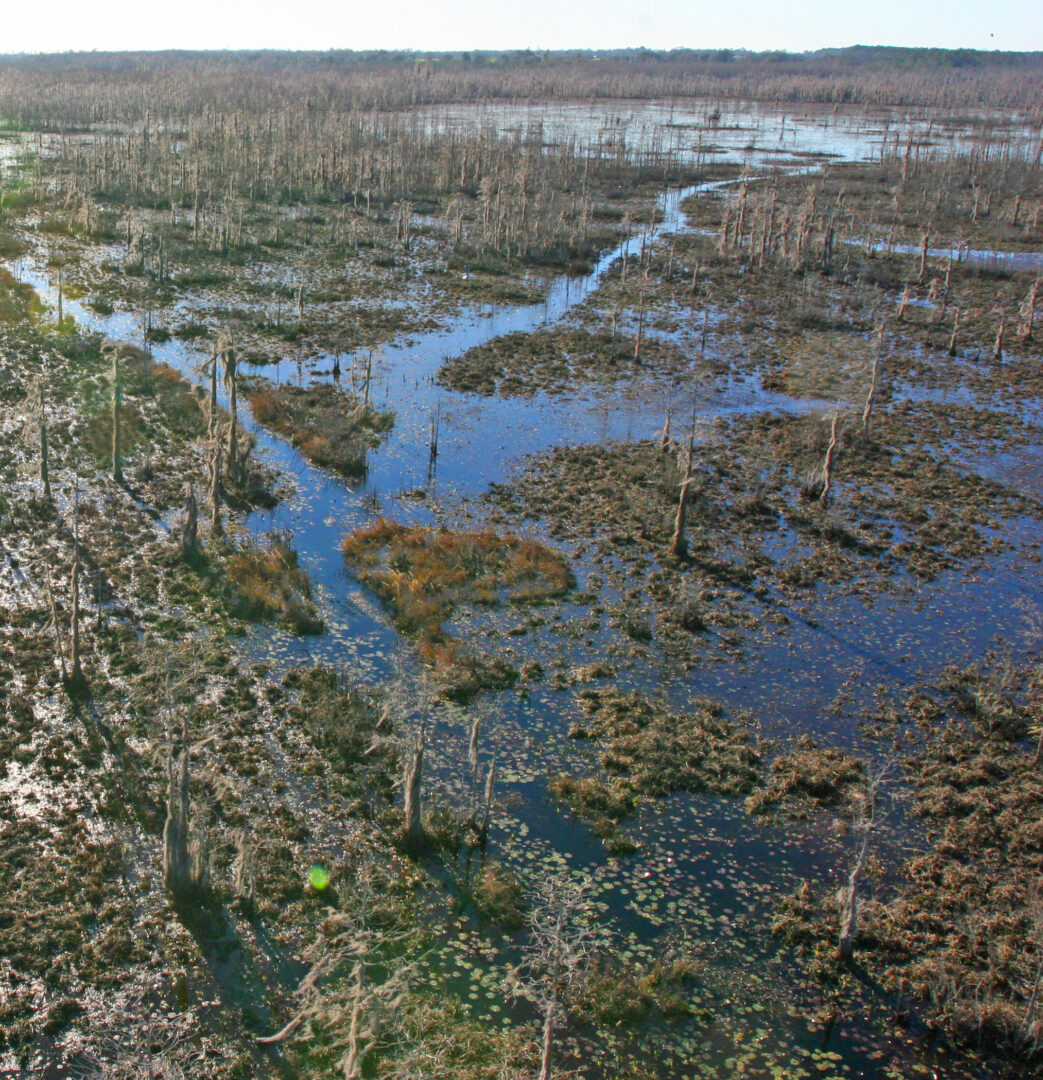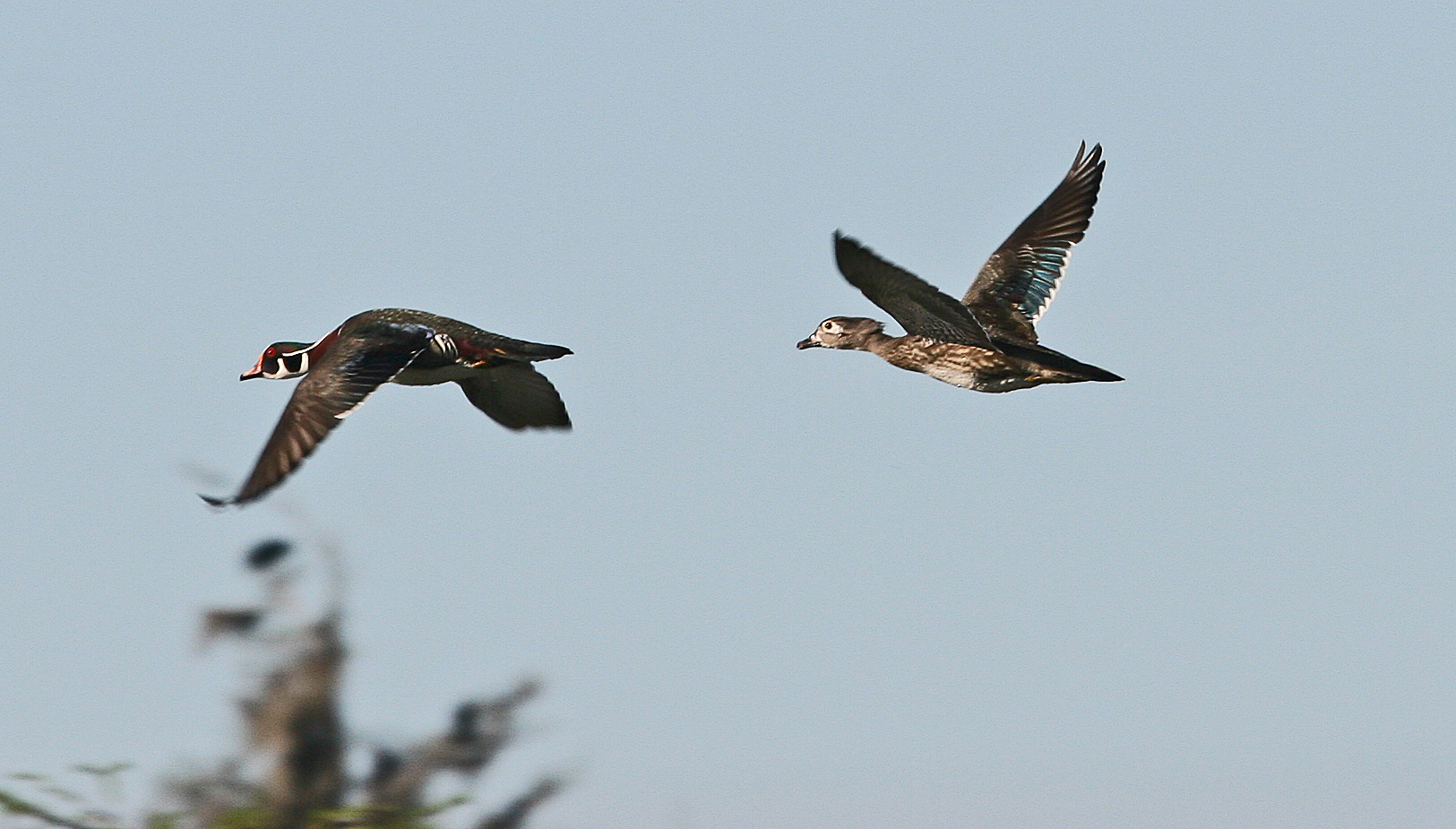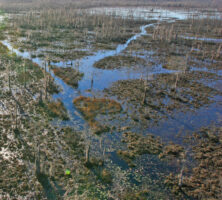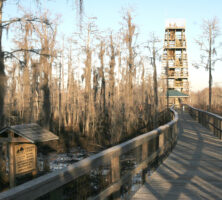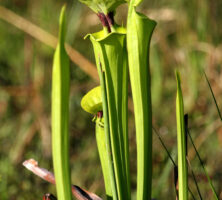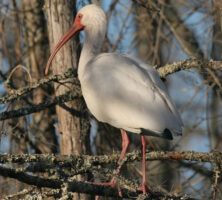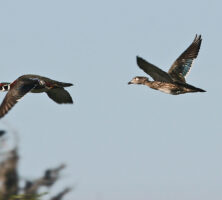The Robert Patten Grand Bay Wetland Education Center, located ten miles north of Valdosta in Lowndes County, teaches and demonstrates the complex ecological relationships between plants and animals. A partnership between the Georgia Department of Natural Resources and the Coastal Plains Regional Educational Service Agency, the center concentrates on the contributions of a functioning wetlands ecosystem to a healthy natural environment. Its educational activities, including guided trips into the Grand Bay Wetland; working with live mammals and amphibians and reptiles; and interactive ecological experiments, correlate with the state of Georgia’s curriculum standards. Approximately 6,500 schoolchildren visit the center annually.
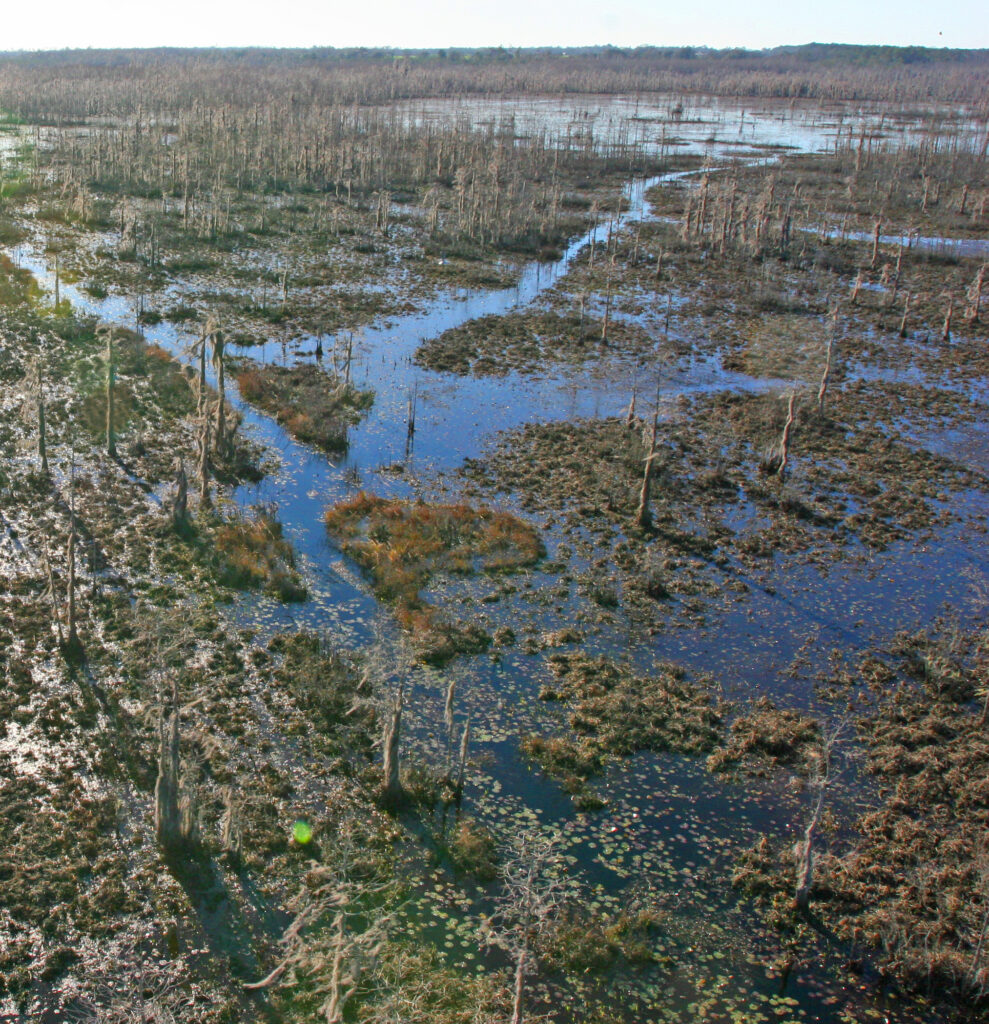
Photograph by Julius F. Ariail Jr.
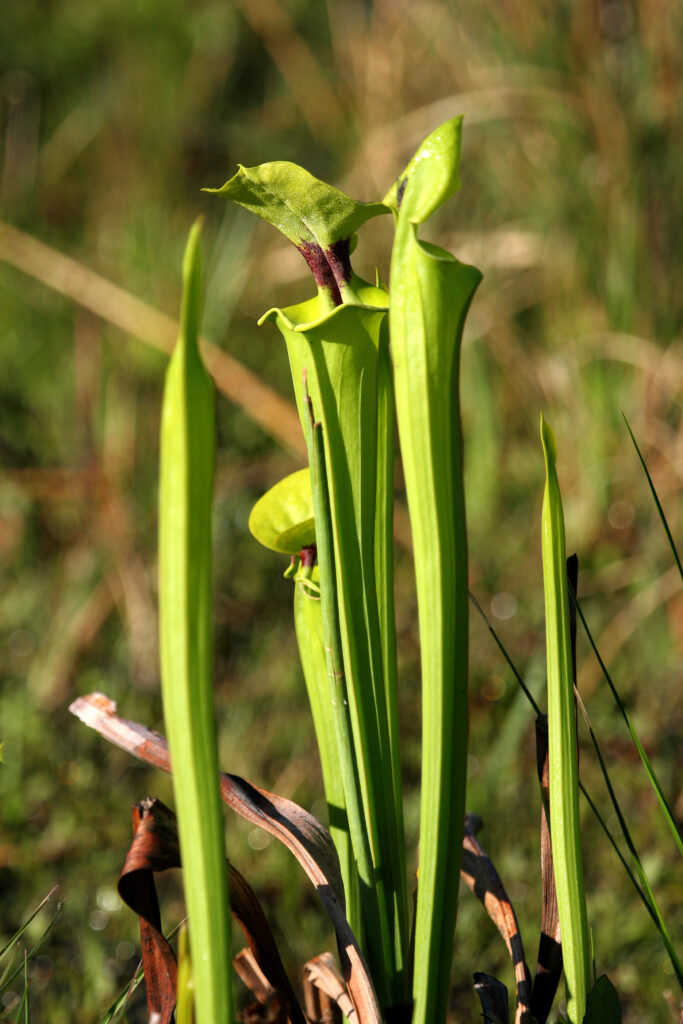
Photograph by Julius F. Ariail Jr.
The center also offers to the public an interpretative experience of the Grand Bay Wildlife Management Area, which includes the 18,000-acre Grand Bay/Banks Lake ecosystem. The size of the Grand Bay ecosystem is second in Georgia only to the Okefenokee Swamp, the largest wetland in the state and one of the largest in the Southeast. Like the Okefenokee, Grand Bay offers many plant communities, including upland longleaf and slash pine flatwoods, cypress and gum swamps, savannahs, and various shrub bogs.
Interpretive experiences include access to the wetland along a half-mile boardwalk, which ends at the Kinderlou Tower, a gift of local businessman Harley Langdale Jr. This structure, once a fire tower that overlooked Langdale Forest Products’ timberland, has been modified to allow observation of Grand Bay’s plant and animal life. The boardwalk takes the visitor through many features of the wetland, beginning with a wet savannah and coursing through shrub bogs, a black gum/cypress pond, and a prairie with various herbaceous plant communities.
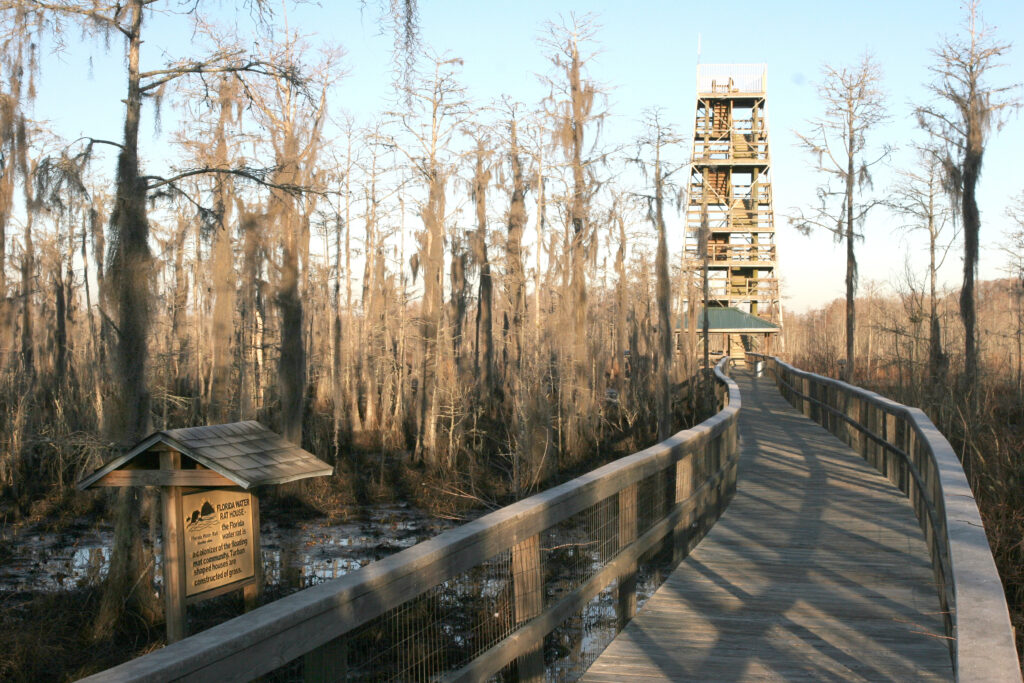
Photograph by Julius F. Ariail Jr.
In a separate area, visitors may fish, launch canoes along a maintained canoe trail (which also ends at the tower), and hike or bicycle along the Longleaf Pine Flatwoods Trail. Seasonal hunting is allowed in designated areas.
Grand Bay is a designated site on the Southern Rivers Birding Trail, which spans the Piedmont and Coastal Plain regions of Georgia and terminates in the state’s wetlands. There are thirty sites for observing birds along the entire birding trail. Within Grand Bay, visitors may observe egrets, hawks, herons, owls, song birds, white ibis, woodpeckers, and wood storks. Alligators, deer, otters, and various species of frogs, turtles, and snakes are also common to the wetland.
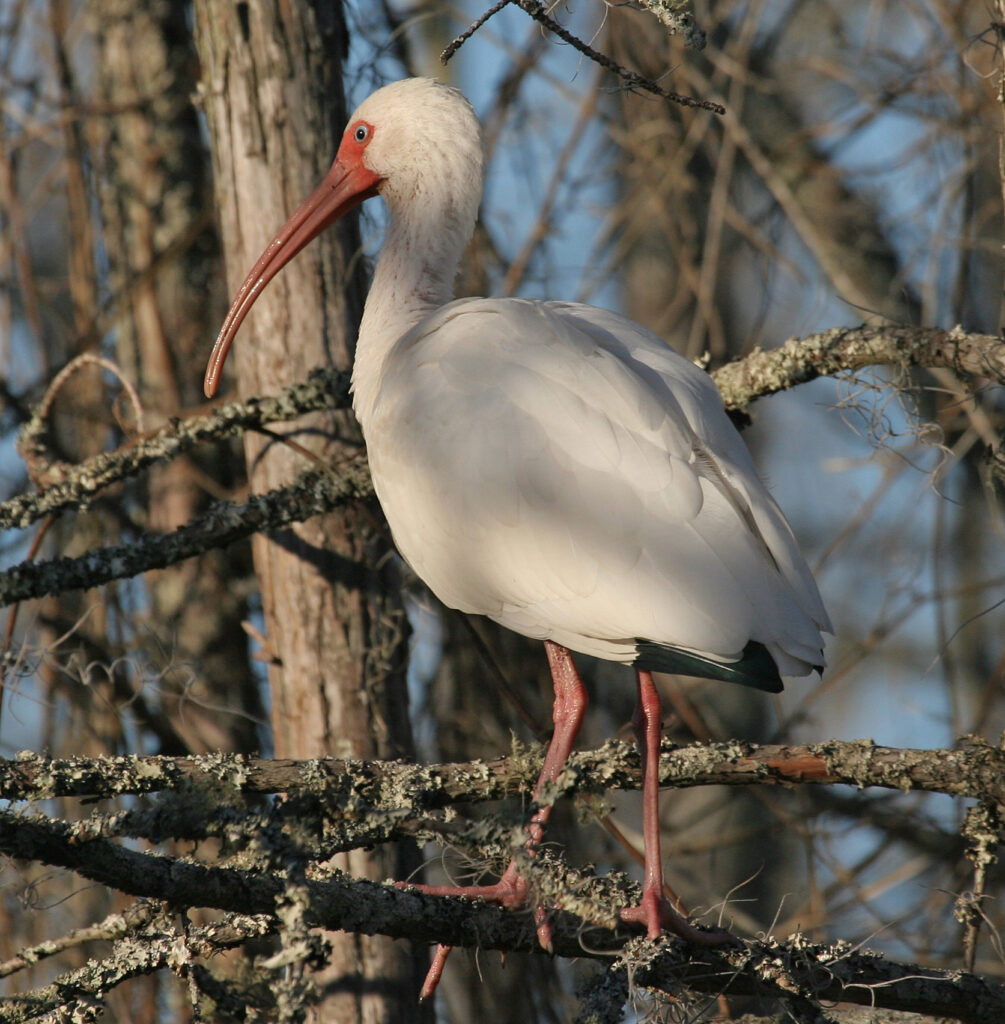
Photograph by Julius F. Ariail Jr.
The larger Grand Bay ecosystem contains four so-called Carolina Bays, an unusual feature of the Coastal Plain of Georgia. Oval in shape, these peat-tilled, relatively shallow depressions always lie in a northeast to southeast direction. Their origins are unknown. Native plants common to Carolina Bays—such as fetterbush and pitcher plants—are well adapted to acidic conditions.
The ecological and recreational features of Grand Bay were not always so appreciated. Around 1900, a steam-powered sawmill began operations on the east side of Banks Lake, located just outside of the town now known as Lakeland. In 1901 the sawmill owner constructed a rail line into the swamp and began extensive logging of cypress trees. From 1908 until 1918 the Barney Smith Car Company operated this mill and used the cypress to build railroad cars. (A remnant of the logging era—a 607-year-old cypress log—is on view at Grand Bay’s nature center.) Also, as late as the 1930s, local farmers grazed cattle in parts of Grand Bay during dry seasons.
Since 1988, the M.A.R.S.H. Project, a partnership between the Georgia Department of Natural Resources, Ducks Unlimited, Moody Air Force Base, and local landowners, has allowed for the ongoing restoration and maintenance of this wetland. As a result, Grand Bay has become a regional nesting site for wood ducks, with more than 850 wood-duck boxes in annual use. Grand Bay also serves as the winter home of migratory sandhill cranes, as well as the year-round home to some crane populations.


